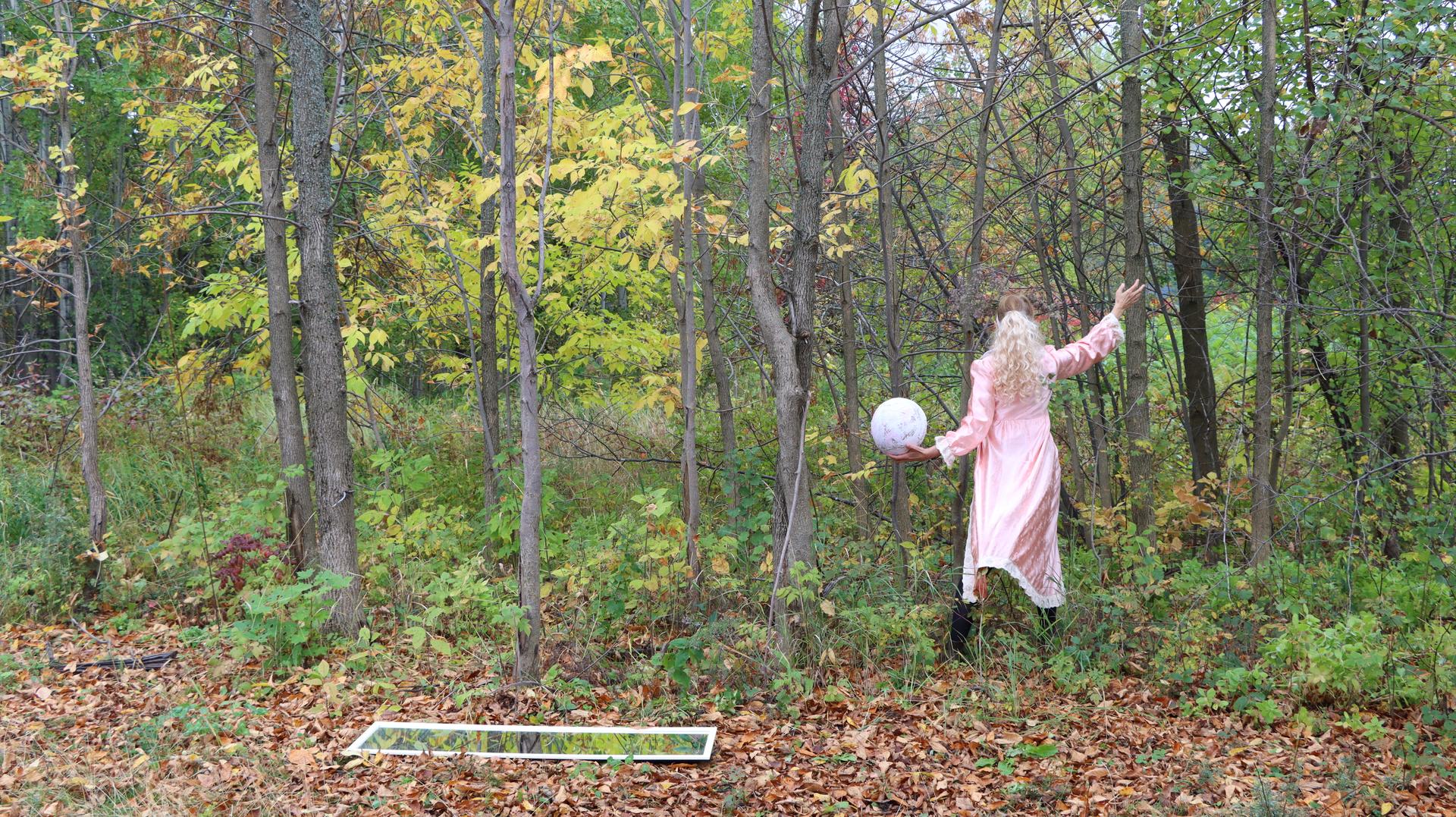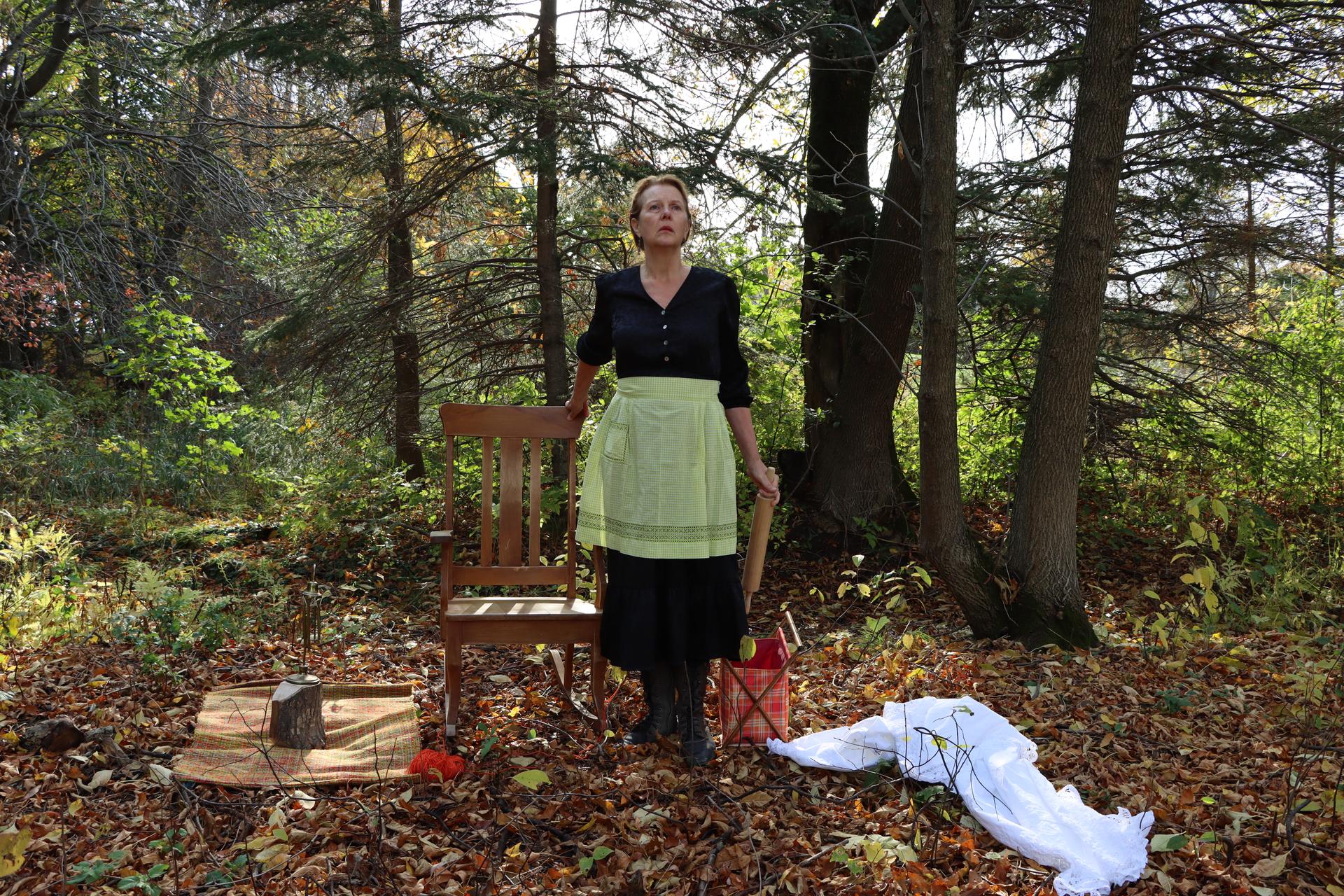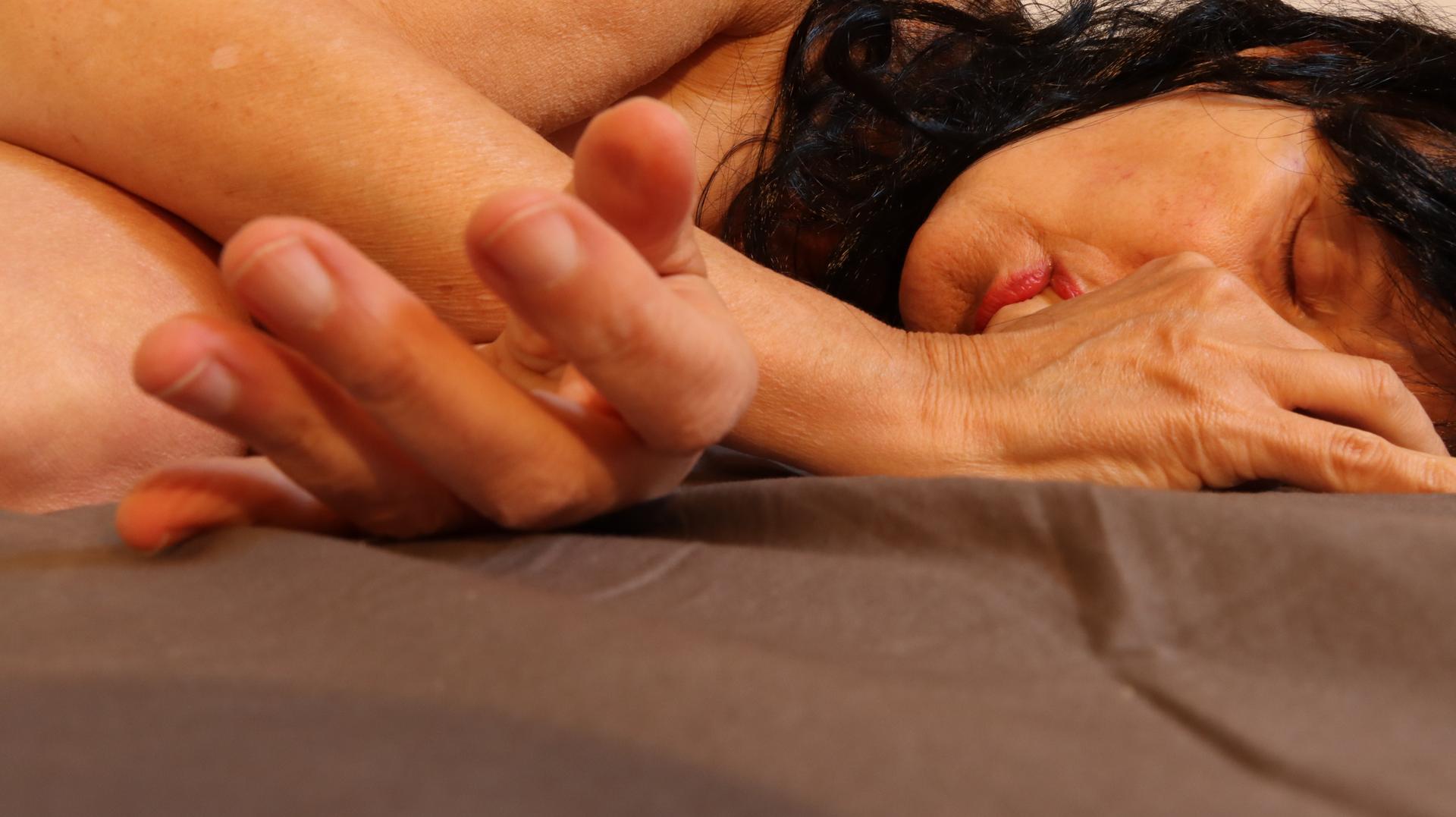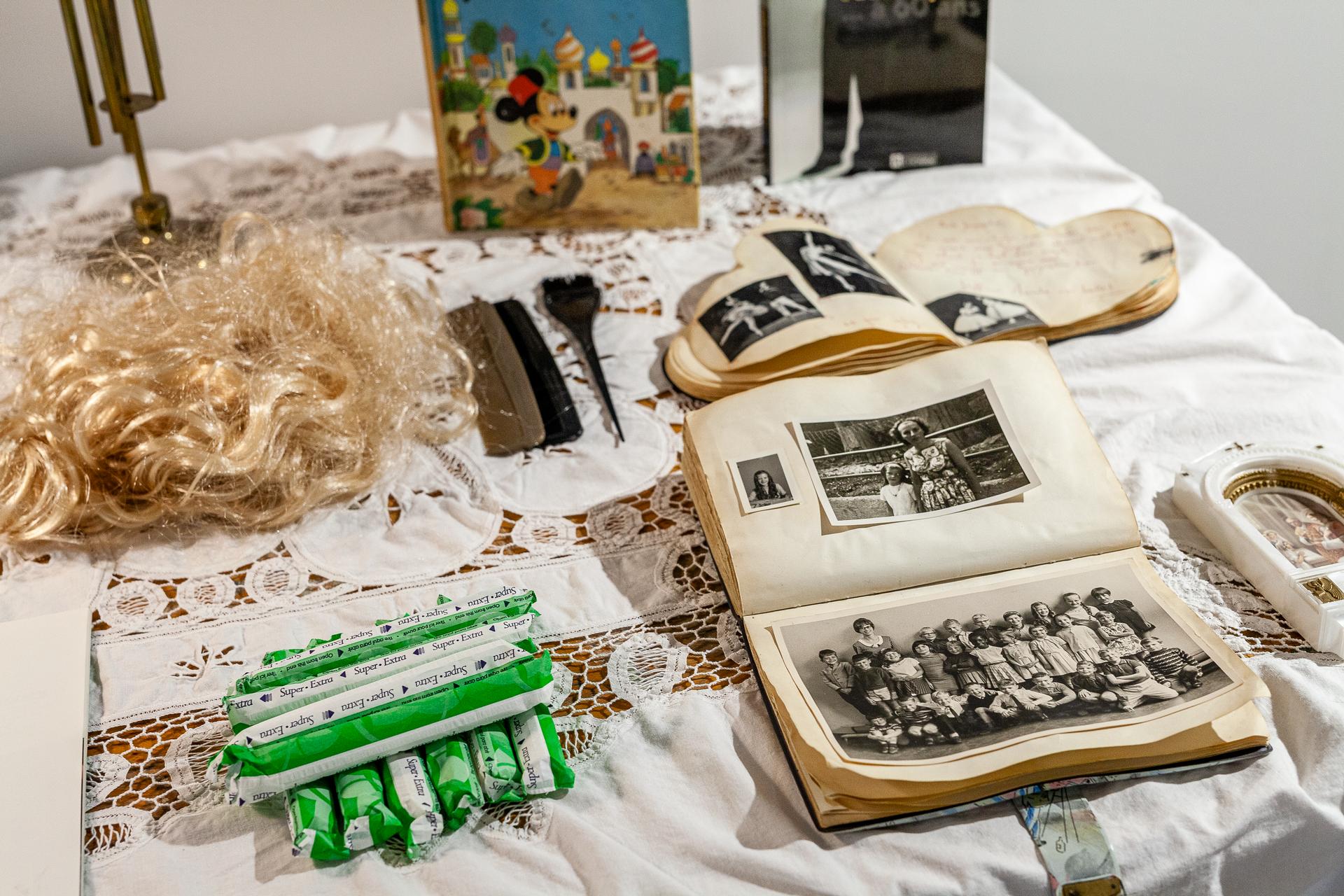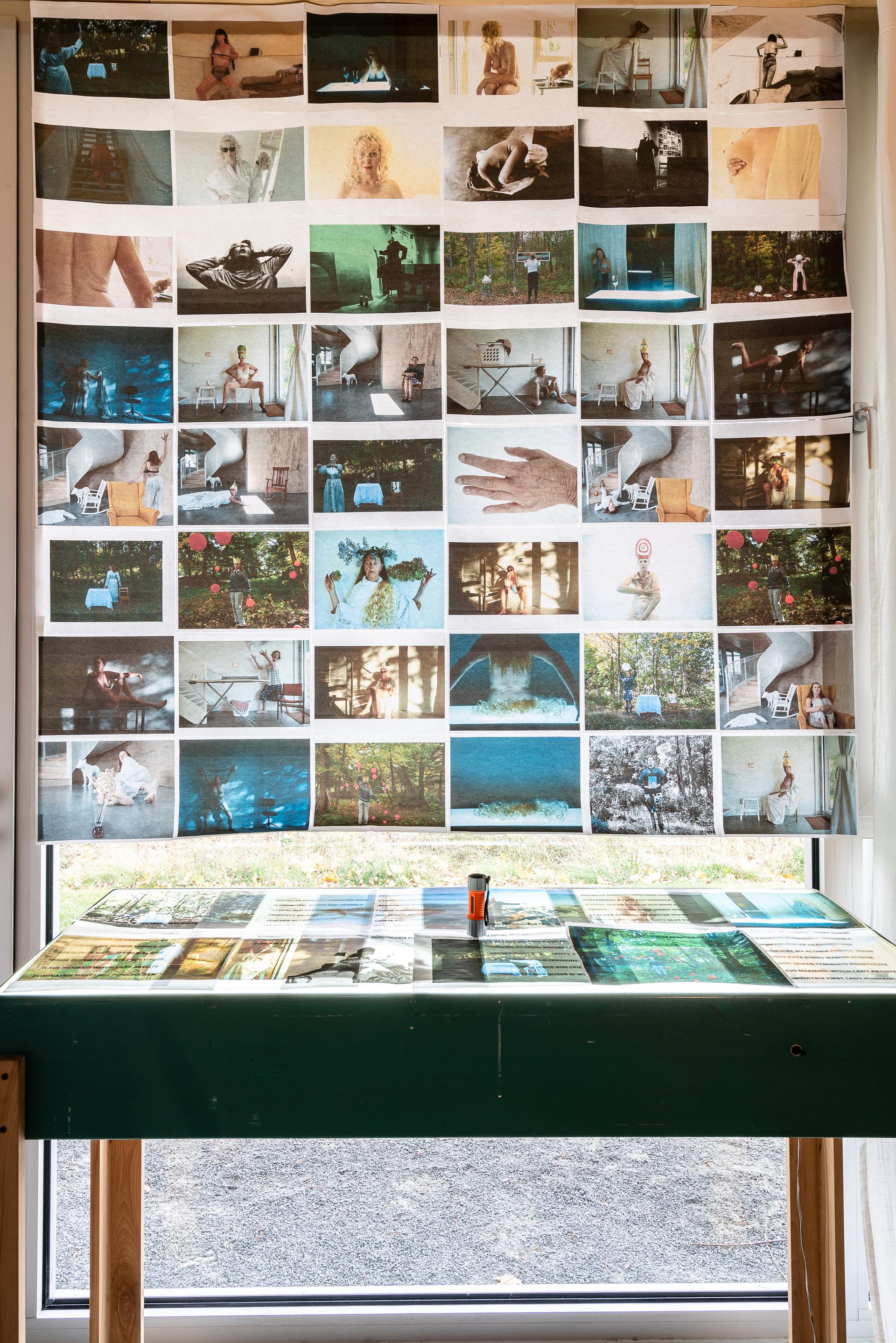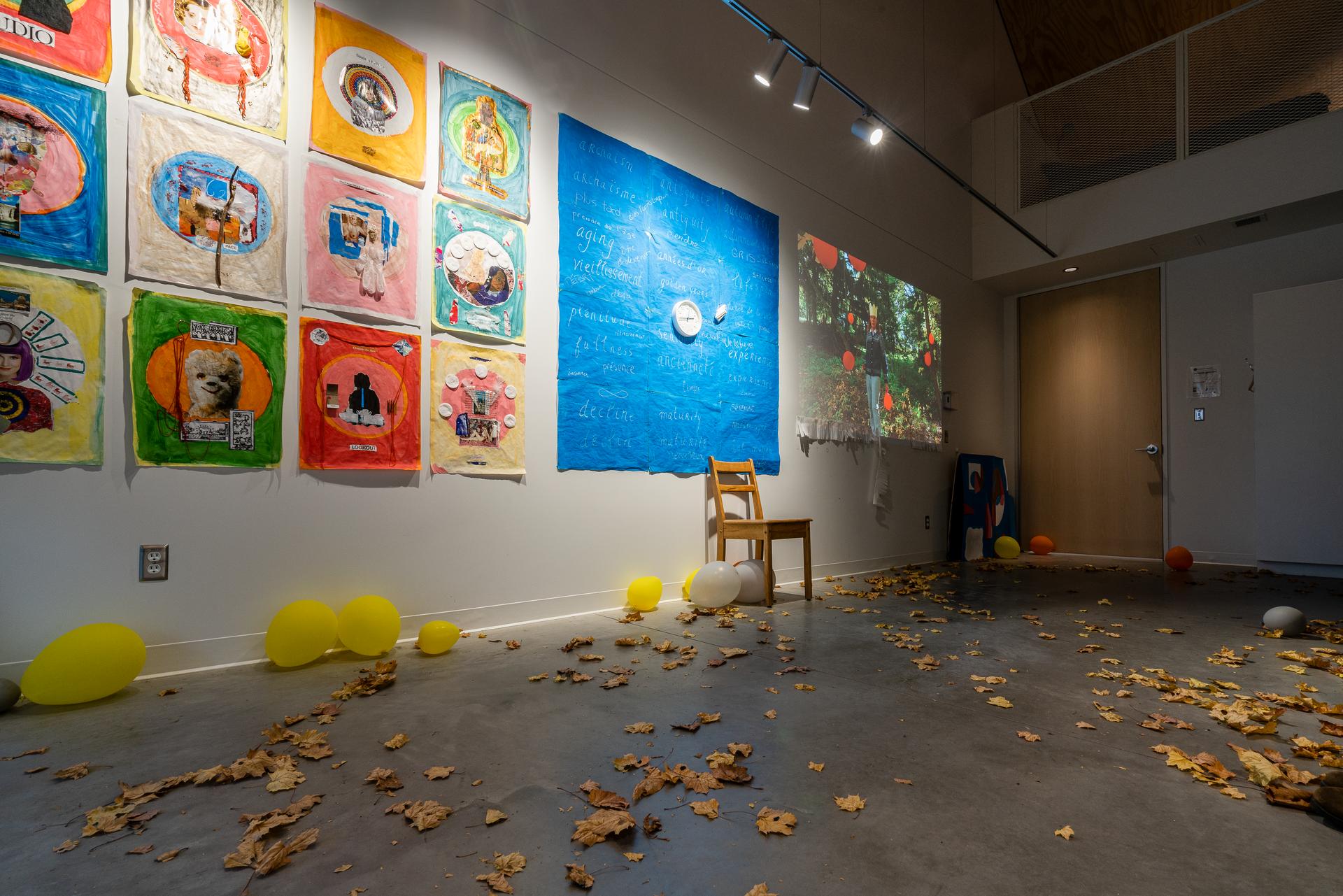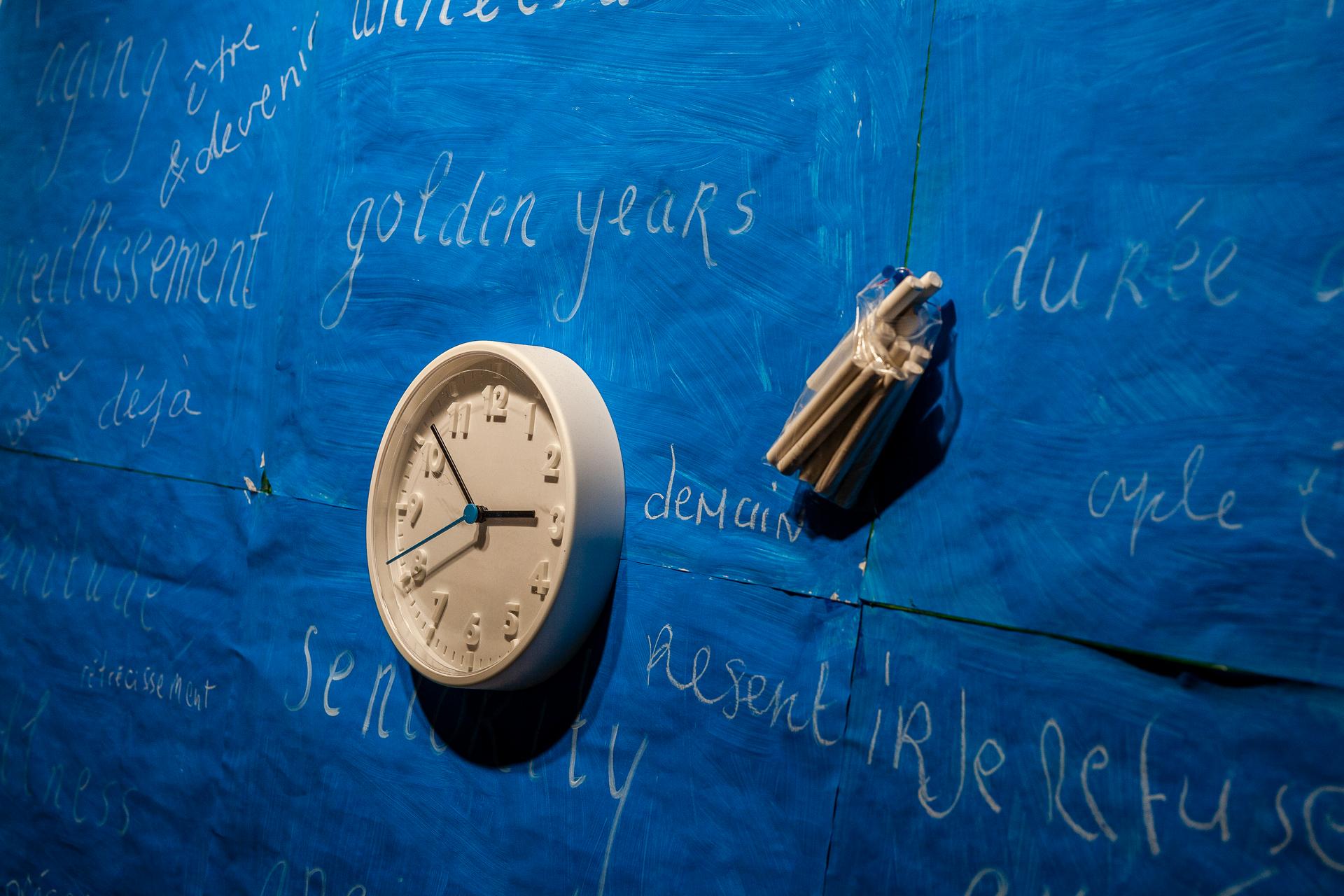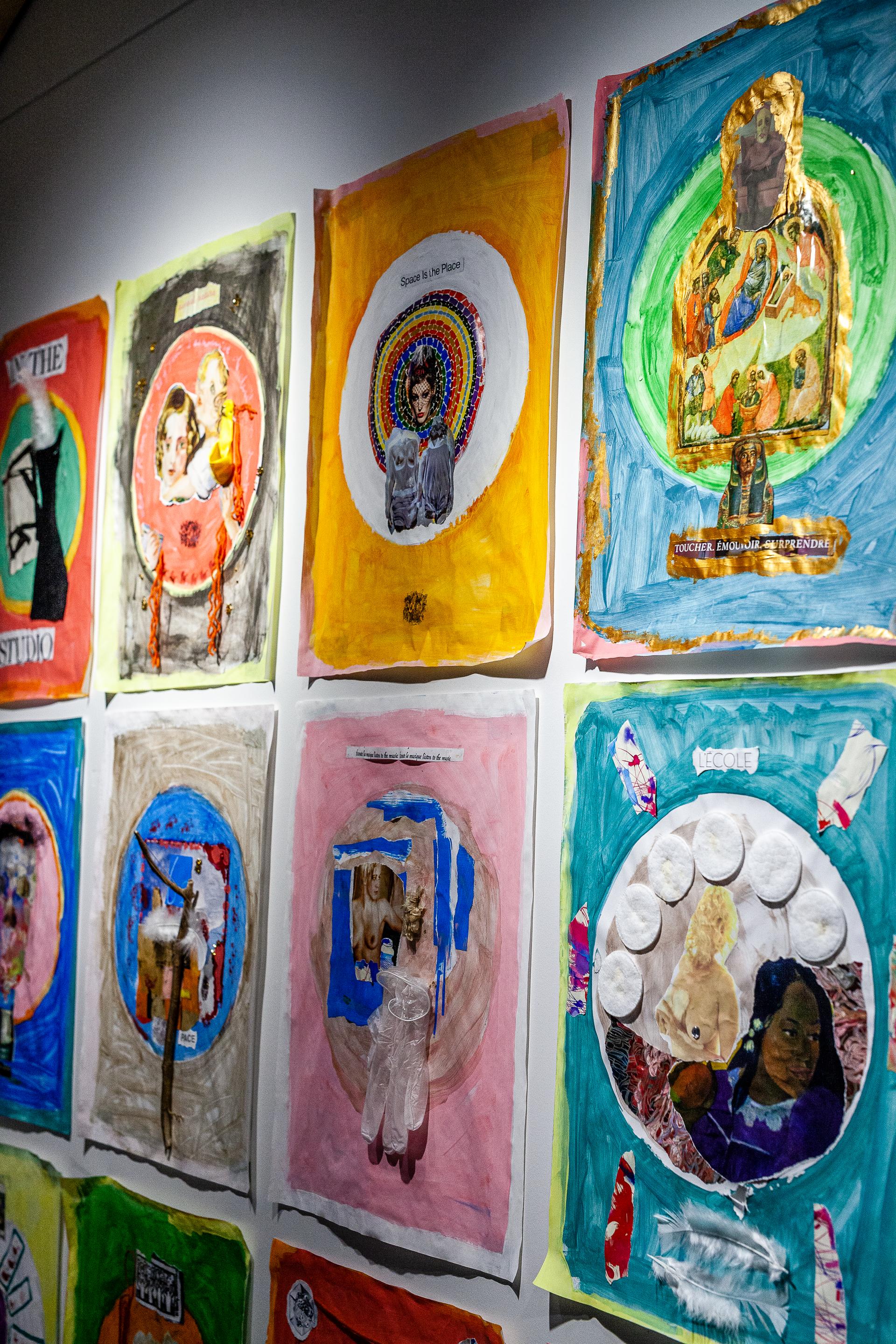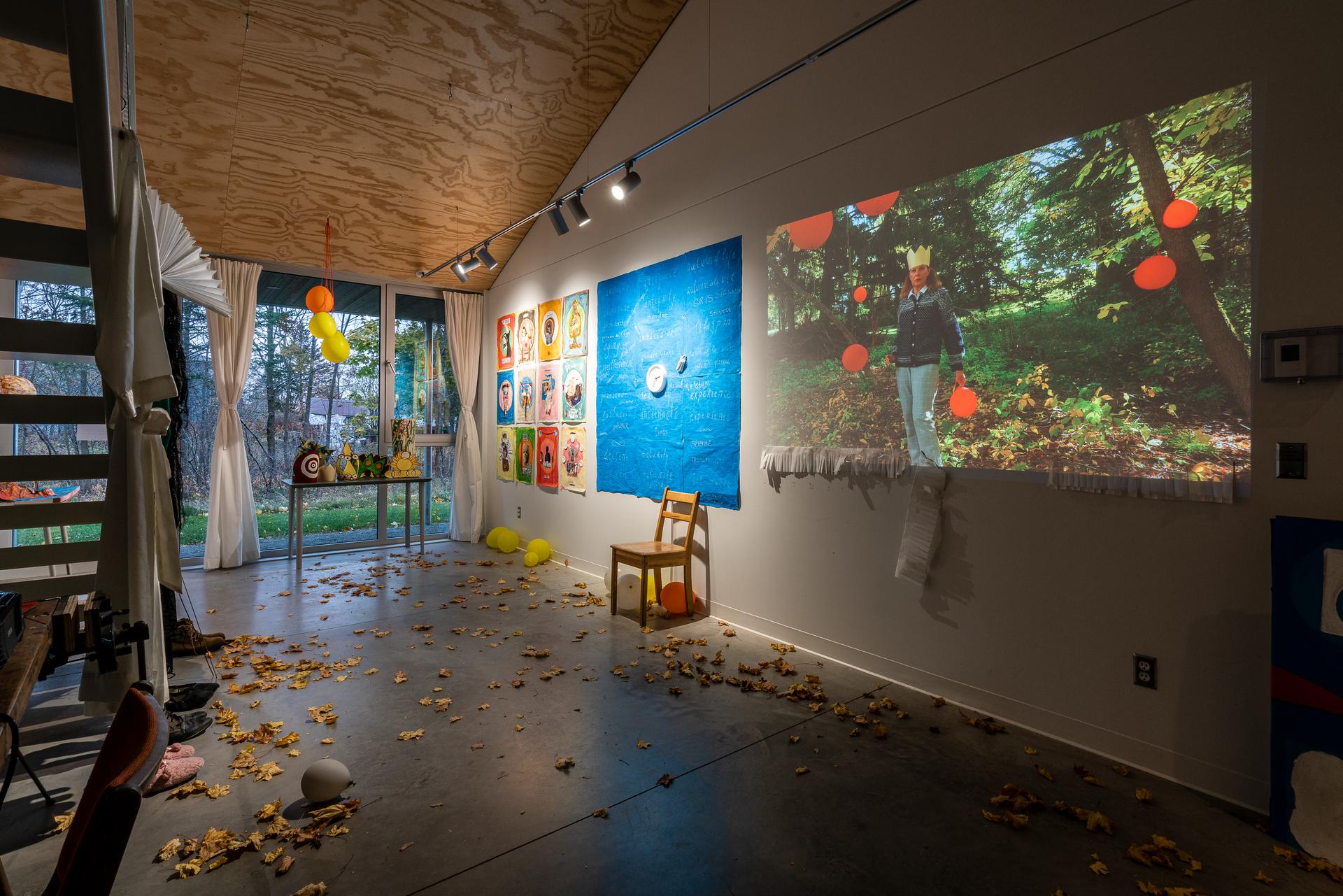
Jacqueline van de Geer
Corps-atelier, corps-maison
“What does ageing mean?” she asks. To probe the depths of this question, she cultivates an acuity to the performative experience of her body-studio, a memorial and symbolic space in which subjectivities and temporalities intersect. In that space, there is what she has been, what she could be, what she is, what she doesn’t want to be, and what she will never be. But there is more than simply her, for she wants to share these entanglements of memories and speculations with others, in order to better acknowledge the collective value of the investigation. The question is asked, therefore, in dialogue with memories that are recounted – those of events inscribed in our experiences, whether we experienced them directly or not, and those that arise in gestures, images, or objects that function as catalysts of sensibilities and narratives. What stories might come to mind – for those whom van de Geer invites to project themselves into the space of the studio – from a black-and-white photograph, a tampon still in its package, or the cover of a 1950s erotic magazine? Engaged with the materiality of the world, her action allows the past to rise into the present and the other into the self, in such a way that being and being with work together, indistinguishably.
“The body is a house,” she says, in which is inscribed, physically and mentally, the passage of time. Est-Nord-Est is also, in a way, a house, whose rooms are metamorphosed by her actions. The multiple and changing embodiments that she disperses into the structure of the residency create a sort of dispossession of the place’s functions and the behaviours that it prescribes. Radically transformed by an attitude, an outfit, a prop placed under particular lighting, the building becomes a theatre for eccentric and plural narratives. The studio, the common areas, and the yard become, in turn, a hotel room, a domestic space, an industrial building, and a forest. Anachronistic subjectivities appear, borrowing their gestures from women of art history and life history. In her body-house, the figures succeed each other: tragic, delinquent, solemn, modest, lost, regal, provocative. They create an intimacy with a variety of curiously revisited female archetypes, whose cobbled-together nature and fluid identity are deliberately revealed. Their stories drift, explore uncertainty, mark the return of a cycle, reveal a regret, or reinterpret a desire. Like an alchemist of existence, she explores different states convoked by those that bloom in her conscience. Her practice is an explosion, a disobedience, a freedom, a presence in the world that welcomes the other to the self to diffract the perception of what lives here, on the threshold of time.
Biography
Originally from the Netherlands, I crossed the Atlantic Ocean in 2005 to live and work in Montréal. I have a bachelor’s degree in visual arts and performance arts.
I draw inspiration from universal themes such as heritage, family, democracy, war, and the politics of exclusion.
I use a variety of media: performance, movement, monologue, object manipulation, improvisation, visual art.
It is important to me to surprise myself in my process and to share this exciting feeling of the unexpected with the participants. Creating intimacy, garnering trust, and revealing the unsettling are critical to my practice.
Discover
Newsletter
Keep up to date with the latest news!

